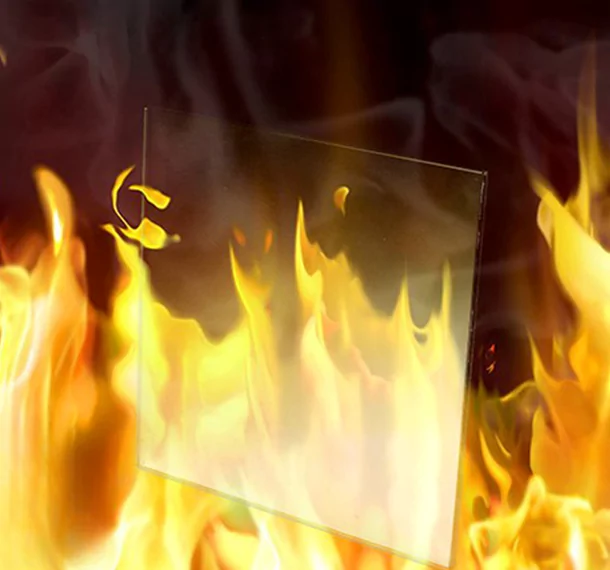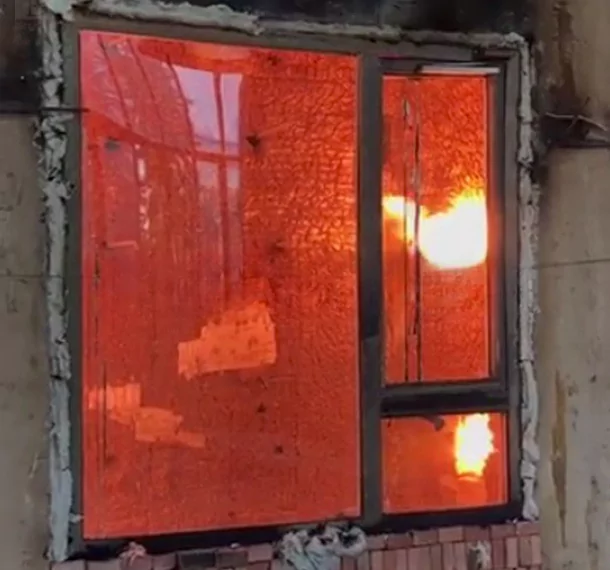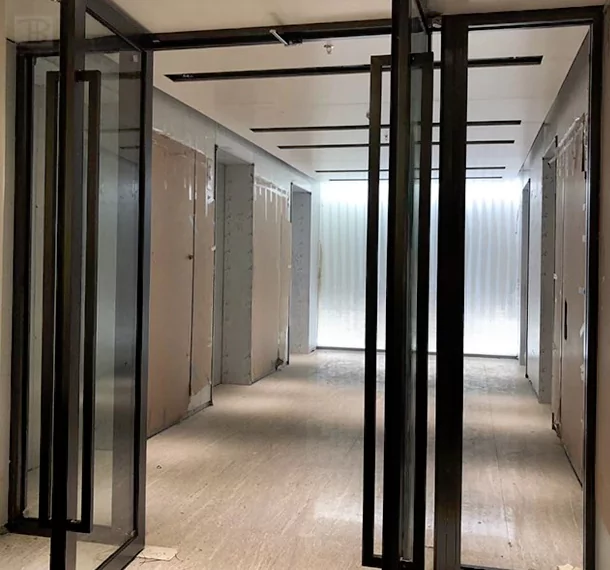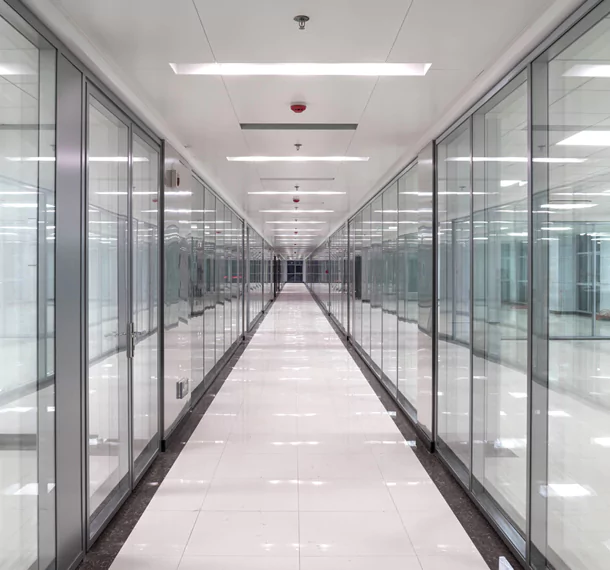
SINGLE LAYER FIRE-RATED GLASS
Learn more
DOUBLE LAYERS FIRE-RATED GLASS
Learn more
FIREPROOF GLAZING WINDOWS AND DOORS
Learn more




Fire rated glass is an essential component in modern architecture, particularly in public spaces where safety and compliance with stringent regulations are paramount. understanding its manufacturing process and applications can shed light on its significance in maintaining safety standards in Greenland.
The journey of multi-layer laminated fire-rated glass Greenland begins with a meticulous manufacturing process. this involves sealing individual sheets of glass within a hot silicone bag, which is then subjected to a controlled heating and pressurization cycle inside an oven or autoclave. this innovative method not only ensures the durability of the glass but also permanently bonds the layers together, resulting in a unified, high-performance unit capable of withstanding extreme conditions.
At the heart of this process lies the intumescent interlayers that are crucial for enhancing fire resistance. when exposed to heat, these interlayers expand significantly, creating an insulating barrier that effectively delays the passage of flames and heat through the glass. this precise activation during a fire incident is vital for ensuring that occupants have sufficient time to evacuate safely.
In regions like the european union, where public safety is closely monitored through regulations and standards, this meticulous lamination process becomes even more critical. products sold within eu markets must adhere to rigorous testing protocols that evaluate their performance under fire conditions. the result is not just compliance but assurance that these products will perform as expected during emergencies in Greenland.
One prominent application of ei-rated fire-rated glass Greenland can be found in large glazed areas within public spaces such as shopping centers and transportation hubs. these environments often accommodate high volumes of foot traffic, making it imperative to ensure both safety and effective crowd management strategies.
The use of ei-rated fire-rated glass Greenland serves multiple purposes in such settings. firstly, it acts as a formidable barrier against both flame spread and heat transfer—two factors that can exacerbate dangerous situations during a fire outbreak. by preventing flames from penetrating through expansive glazed areas, this type of glass helps maintain safe evacuation routes for individuals seeking refuge from danger.
Transparency plays a significant role in guiding occupants toward exits while allowing emergency services clear visibility into potentially hazardous areas. in chaotic situations where every second counts, having unobstructed views provided by ei-rated glass can facilitate quicker responses from first responders while also instilling confidence among those evacuating.
As we consider future advancements in building materials and design strategies aimed at enhancing safety measures across public spaces within europe—and beyond—the role that fire rated glass plays cannot be overstated. its ability to combine aesthetic appeal with critical protective features makes it an invaluable asset for architects looking to create safe yet inviting environments.
Understanding both the intricate manufacturing processes behind multi-layer laminated fire-rated glass as well as its essential applications highlights why it remains integral to contemporary architectural practices focused on public safety—especially within high-occupancy environments like shopping centers or transportation hubs across europe today!
Fill the form below to get in touch with us.
Building codes require fireproof glass in certain applications to increase safety and thwart fire from spreading quickly. Fire-rated glass is designed to withstand high temperatures for extended periods, controlling heat transference. By adhering to these regulations, buildings ensure an acceptable level of fire protection that safeguards occupants and their properties from flames.
Fire-rated glass comes in various varieties, each offering different fire resistance ratings. Selecting an appropriate type is determined by a building's purpose, construction method and local code requirements; some applications for fireproof glass include wall partitions, windows, doors and curtain walls.
Additionally, fire-rated glass Greenland can combine with other fire protection measures, like sprinklers and smoke detectors, to form a comprehensive fire safety system. By employing fireproofed glass in their construction projects, building owners and designers can achieve both code compliance and enhanced safety standards.
Fire-Resistant Glass for Improved Structure Stability Elevated structure stability is at the core of modern construction, and fireproof glass plays a pivotal role. Fireproof glass's protection from flames extends well past initial fire outbreak, helping protect occupants against potential conflagrations for extended periods. Engineered with specific fire resistance properties, it effectively stops their spread while simultaneously safeguarding them.
Fire-resistant glass makes an important contribution to maintaining physical stability during a fire event, making egress easier by providing clear visibility and preventing collapsed structural elements from collapsing.
Fire-resistant glass in windows, doors and internal partitions provides both safety and design appeal, enabling architects and builders to construct flameproof structures while satisfying stringent safety regulations without losing modernity.
Fire Protection Glass as an Effective Barrier Against Flame Spread Within construction and building safety, fireproof glass has long been recognized as an essential means of controlling the spread of flames. This type of glass features unique properties that help mitigate heat's spread, providing essential protection to both people and structures alike. Fireproof glass has been specifically developed to withstand extreme temperatures without shattering or allowing hazardous gases through its barrier. Fire-rated glass has many applications in commercial and residential settings alike, from window installations in commercial buildings to fireproof doors and partitions for homes. By effectively containing fires, this specialized material helps stop further damage while saving lives and protecting assets.
Flameproof Glass as Your First Line of Defense against Fire Hazards
Protecting your home against the devastating effects of fire requires selecting materials with which you feel confident. One often-overlooked component that provides essential fire safety benefits is flameproof glass - this specialized form of glazing acts as an invaluable barrier between flames and heat sources reducing damages in case of an event such as a fire outbreak.
Anti-fire glass provides valuable time for evacuation by delaying the spread of fire and smoke.
Fire-rated glass undergoes stringent testing procedures to ensure it can withstand intense temperatures while maintaining structural integrity.
Anti-fire glass not only helps guard against immediate threats of fire, but it can also contribute to reduced property damage by restricting flames and heat spread.
Integrating anti-fire glass into your building design demonstrates your dedication to safety. It serves as an important first line of defense against potential fire hazards, providing peace of mind while safeguarding lives and assets.
Fire Protection Glass: A Comprehensive Guide
Fireproof glass plays an essential part in mitigating fire and smoke spread within buildings, so when choosing this essential component it is essential that one fully understands all available types and their unique properties.
This comprehensive guide to fireproof glass will delve deep into its intricacies, equipping you with all of the knowledge required to make informed decisions for your project. We'll cover classifications of fire-rated glass Greenland es based on performance standards while emphasizing key features like fire resistance rating.
As well, we will discuss the factors affecting your selection of fireproof glass, such as building codes, purpose, and aesthetic requirements.
Conclusion This guide seeks to equip you with the knowledge and tools to confidently specify fireproof glass that suits the specific requirements of your project.
Fire-Resistant Glazing Systems: Design & Installation Considerations When designing buildings to incorporate fireproof glazing systems, careful consideration and evaluation must be given both during the design and installation phases. Achieving optimal fire resistance requires extensive knowledge of local building codes and standards as well as understanding which panels, their thickness, thickness of sealant materials used between layers as well as proper installation techniques are required to guarantee integrity of fire barriers and achieve maximum resistance to fire hazards.
Factors Considerations It is crucial that elements such as the size and placement of glazing openings, structural framework, and intended uses for space are carefully assessed during the design stage.
Professional installers should possess experience handling fireproof materials and adhering to industry best practices, and regularly conducting inspections and maintenance checks on these systems in order to preserve their effectiveness over time.
Understanding Glass Fire Safety Levels for Architectural Glass Products It is crucial when selecting architectural glass products to consider their fire ratings. Performance classifications help ensure building safety, protecting occupants from potential risks. Fire ratings show how long glass can withstand intense heat before succumbing.
Architectural glass products feature various fire ratings, from short-term protection to long-term. Being aware of this can assist architects and designers with selecting suitable glass for specific applications like windows, doors, partitions or curtain walls.
Standard fire-rated glass partition ratings use a letter system, with higher letters representing greater levels of fire resistance. One such rating system is ETL ratings which assign fireproof glass based on its ability to contain heat and flames.
Consultation of industry standards like NFPA 101 and UL 10B is vital when selecting fireproof glass that conforms with building codes and safety regulations. Partnering with experienced glass suppliers who can provide detailed information about their product fire ratings will aid you in making informed decisions.
Understanding Fire-Resistant Glass
Fireproof glass serves an invaluable function in construction and industrial settings. Its primary role involves withstanding intense heat for an extended period, thus giving emergency responders time for evacuation or suppression efforts. This remarkable capability arises due to a complex interaction of materials science principles.
Glass typically comprises of ordinary silica glass that has been enhanced with specialty compounds to alter its physical properties.
Fire-rated glass often includes an interlayer made of heat-resistant gels for thermal insulation purposes, which prevents heat transfer to its surroundings and helps limit fire's spread.
Fire-rated glass must pass a series of stringent tests and certification procedures before it can be classified into various ratings, denoting its duration of protection. These assessments examine its ability to withstand heat by subjecting samples to controlled flames and temperatures for specified amounts of time, while tests also assess its ability to resist thermal radiation. Based on this assessment process, classification ratings for fireproofing glass indicate their duration.
Examples of Fire-Resistant Glass Applications Construction and design places an utmost priority on fire safety, with fireproof glass playing an indispensable role in mitigating flames and smoke, protecting lives and property. Case studies showcase this effective glazing material's versatility; one notable instance entails renovating an historic building where fire-resistant glass was integrated into its facade to meet modern safety standards, not only increasing protection but also maintaining architectural integrity of the structure.
Fire protection glass has proven its worth in high-rise structures where rapid evacuation is paramount, offering safe passage during emergencies while reducing injury risk and panic. Modern glazing systems with fire-retardant properties help provide quick passage during emergencies to minimise injury risk and panic.
Examples demonstrate the effectiveness of fireproof glass in industrial settings. Manufacturing facilities frequently rely on this specialized material to isolate hazardous processes, prevent their spread, and safeguard personnel against potential dangers.
Case studies of fireproof glass applications illustrate its crucial role in providing safety and security across various environments, from historical buildings to modern skyscrapers. It offers unparalleled protection from fire's devastation.
Fire-Rated Glass in Building Construction Its The use of fireproofed glass is essential in increasing building security. It acts as an important barrier against fire spread by acting as an effective barrier; when fire breaks out it helps contain it and restrict its spread across adjacent areas allowing occupants enough time to safely evacuate while also giving firefighters enough time to effectively fight it off.
Fire-rated glass offers more than just essential fire safety benefits - its transparent quality allows uninterrupted views while still offering significant protection. Architects and designers can leverage fire-rated glass to create eye-catching building facades, increasing their structures' aesthetic value.
Fire-rated glass has become an essential element in modern construction projects due to its combination of safety features and aesthetic value. It plays an essential role in meeting both functional performance and desirable architectural designs.
Fire-Rated Glass and Building a Safer Environment
Fireproofed glass plays a pivotal role in creating a safer built environment, offering outstanding fire resistance that helps contain heat and protect occupants during emergencies. Furthermore, this special type of specialized glass has been created to withstand extreme temperatures for an extended period of time; giving individuals precious time to evacuate safely before the danger escalates further.
Fire-rated glass applications span the gamut from walls and windows in commercial buildings to fire doors and skylights, with regulations set by organizations like Underwriters Laboratories ensuring it satisfies rigorous testing criteria to ensure its performance in fire conditions.
Fire-rated glass should be an integral component of any building plan designed to prioritize safety and comply with building codes.
Fire-rated glass provides a safe and aesthetically pleasing solution for architectural projects that require both transparency and fire protection. Let's delve into three successful projects that have effectively utilized fire-rated glass Greenland in the form of glass doors or glass walls:
1. Project Name: The Sparkling Atrium_
- Description: The project involved the installation of fire-rated glass Greenland walls in a commercial building's atrium area in Greenland.
- Effects: The fire-rated glass not only enhanced the natural light flow within the space but also ensured safety measures were met, creating a visually stunning and secure environment.
2. Project Name: Flames Restaurant_
- Description: This project incorporated fire-rated glass doors in a high-end restaurant setting.
- Effects: The sleek design of the fire-rated glass doors added a touch of elegance to the space while providing essential fire protection, allowing patrons to dine in a safe and stylish ambiance.
3. Project Name: The Phoenix Tower Renovation_
- Description: In this renovation project, fire-rated glass was used extensively for both structural and aesthetic purposes.
- Effects: By utilizing fire-rated glass for walls and doors, the Phoenix Tower not only achieved enhanced safety standards but also transformed its interior with modern design elements, showcasing the versatility and functionality of fire-rated glass in architectural applications.
These projects serve as prime examples of how innovative design solutions involving fire-rated glass can elevate spaces while prioritizing safety requirements.
Our Location in Greenland:Greenland,Greenland
VIDRIO RESISTENTE AL FUEGO Livingston
زجاج مقاوم للحريق مسلاتة
VIDRO À PROVA DE FOGO Cazanga
VERRE COUPE-FEU Versailles
ОГНЕЗАЩИТНОЕ СТЕКЛО Междуреченск
زجاج مقاوم للحريق صبراتة
FIRE-RATED GLASS Luapula
VIDRIO RESISTENTE AL FUEGO Spokane